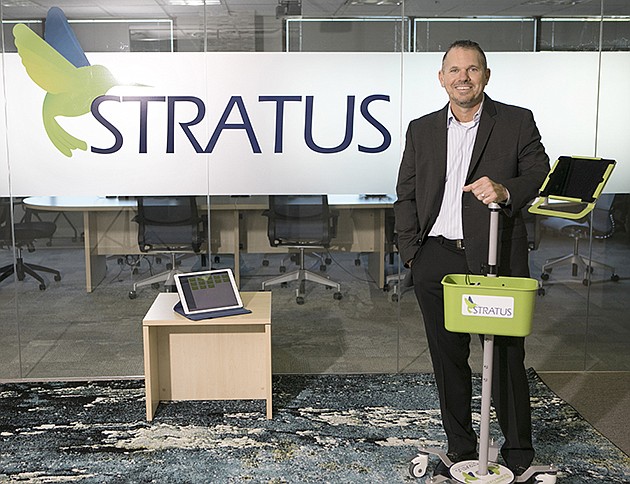- November 24, 2024
-
-
Loading

Loading

Four years ago, Stratus Video had no partnerships with health systems or hospitals.
Today, the Clearwater-based company's video interpretation service is now used in 1,500 hospitals and 120 health systems.
Stratus achieved the growth by tackling a looming patient issue and hospital inefficiency — language interpretation. Using a combination of technologies, Stratus developed a program that allows hospitals to use an existing device, such as an iPad, and then connect through an uber-like app to an interpreter, in a few clicks.
Founded in 2011, Stratus' live video remote interpretation services can be used over PCs, Macs, Androids, iPhones and tablets. Most clients request Spanish to English translation services, but the company's interpreters are certified in more than 15 languages, from Arabic to Vietnamese. Hospitals, including several in the Tampa region, signed on to the services to communicate faster with non-English speaking patients.
Stratus used this niche to fuel some explosive growth: the firm had $11.6 million in revenue in 2015 — up an eye-popping 4,190% from 2011. That landed Stratus on the 2016 Inc. magazine list of the 500 fastest growing private companies nationwide, at No. 66. It has more than 520 employees in the U.S., 125 in Costa Rica and 1,200 contractors worldwide. “We've grown exponentially in the last year and a half,” Horner says.
The high expectations continue, with officials projecting the company will achieve triple digit growth again in 2017. Stratus executive Lee Horner says that growth will come from both its language services for hospitals and other clients and an ambitious rollout in telehealth, or virtual medical services. The company expects the business to be split 50/50 between language and telehealth services by 2018.
The key to the telehealth model is the company is asking current and prospective clients how it can leverage its technology to improve efficiencies and lower medical re-admittance rates. Telehealth is a big market, expected to grow to $35 billion in the next five years, says Horner, Stratus's president of telehealth.
The telehealth service can be used in several ways. Horner is currently working with a Pennsylvania facility, for example, to use telehealth to leverage staff more effectively because the hospital didn't have enough cardiology and burn specialists to make all its rounds. With video conferencing, the company was able to achieve a 45% gain in time back to the physician and the health system.
Stratus officials also see a business opportunity for its telehealth division in post-hospital discharge. When a patient is discharged, a hospital typically gives the patient a 30-page document and hopes the patient stays engaged for 30 days to follow up the care. “Hospitals spend billions on this,” Horner says. “But you get home, throw it on the kitchen table and get on with real life.”
Stratus is working on a “three touch” program for patient discharge. The program sends a follow-up via text or email the day after discharge, asking the patient to click on a link. The Stratus app can then launch a telehealth videoconference with care coordinators and interpreters for a check-in. Stratus charges hospitals an upfront fee to set up the pilot program and then an annual subscription for the service.
Stratus started out as a video interpretation service for the deaf and hard of hearing. From that the firm found its focus on language interpretation for health systems and hospitals. There was a need in the marketplace because many hospitals were wavering between in-person interpreters and telephone-based interpretation services. In-person is ideal, but there's a high cost and time barriers associated with in-person translators. There's also the risk of no-show.
Stratus developed a videoconference software platform where an iPad could be rolled to the patient's bedside and once a language was selected, within 30 seconds, a video interpreter was available.
A big obstacle going forward, says Horner, is to overcome existing perceptions about what telehealth is and how it can assist the health care system. Also, the platform is extremely robust, he says, so the challenge is to concentrate on one piece at a time and “not try to boil the ocean.”